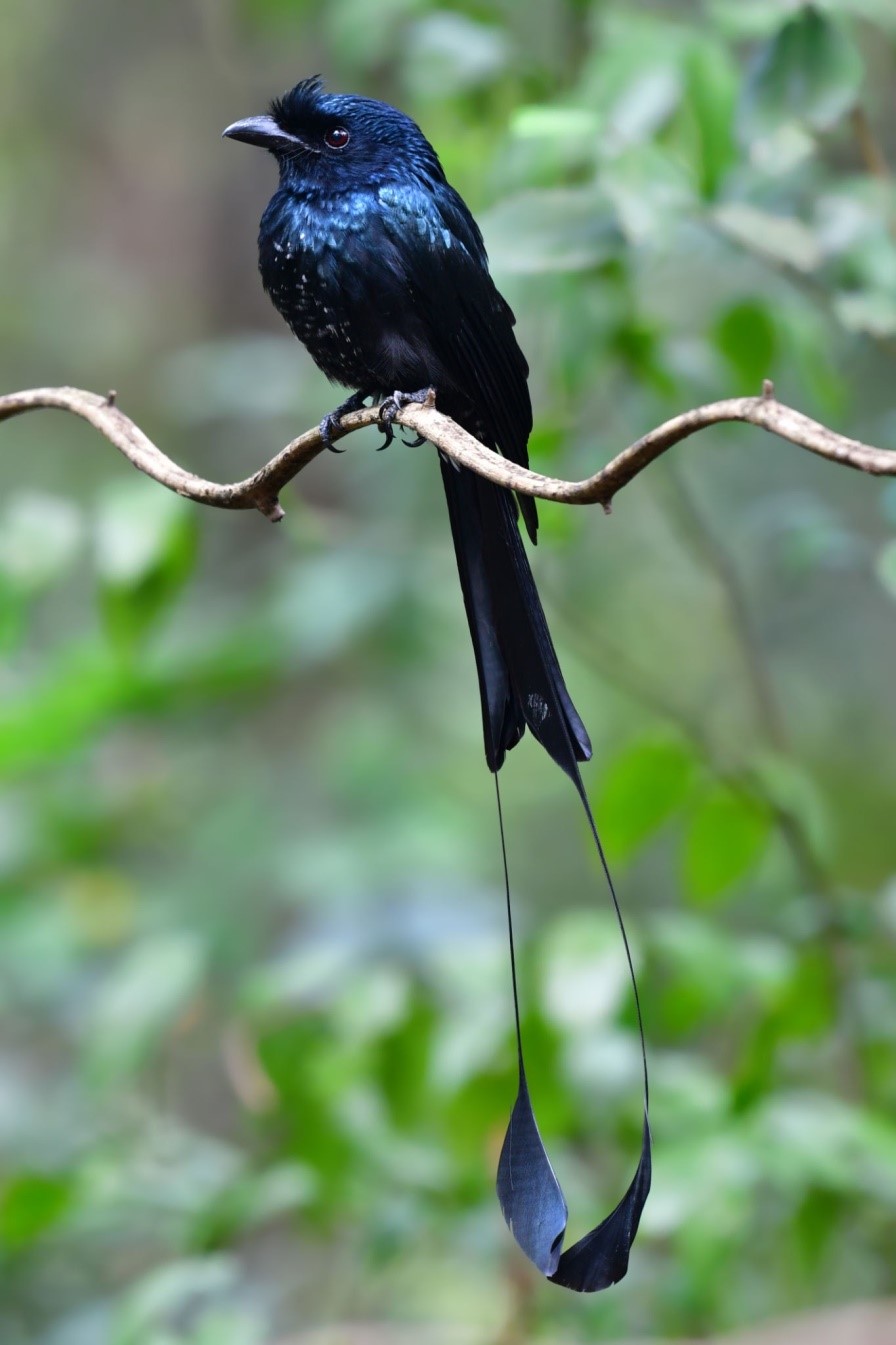Description

Disclaimer: Copyright infringement not intended.
Context
- At the Hastinapur Wildlife Sanctuary few experts spotted three avian species.
- Greater racket-tailed drongo noise was heard and confirmed.
- The other two spotted species were
- Black headed oriole – it was sighted after 40 years,
- Red-whiskered bulbuls
Other Details
- A group of experts was conducting the government-directed Sarus crane census when they heard the sound made by Greater racket-tailed drongo.
- Group included assistant director at the Bombay Natural History Society (BNHS) Rajat Bhargava.
- Experts Confirmed that the sanctuary was now a breeding ground for the species.
- The species was confirmed as resident species of this sanctuary for the first time.
|
Hastinapur Wildlife Sanctuary
- Hastinapur Wildlife Sanctuary is a sanctuary in the Gangetic plains of state of Uttarpradesh.
- It is spread across various district namely Meerut, Ghaziabad, Bijnore, Amroha and Jyotiba Phule Nagar and covers an area of more than 2,000 sq. Km.
- In 1986, the above mentioned area was declared as Hastinapur Wildlife Sanctuary.
- The main aim was/is to protect and conserve the ecology and biodiversity of the Ganga basin.
|
Greater racket-tailed drongo
- It is known by its scientific name Dicrurus paradiseus, who belongs to the family of Dicruridae.
- It makes loud calls for food and mating.
- It has a distinctive tail rackets and has short legs.
- It can also imitate sounds of other birds.
- They mainly feed on insect but eat fruits
- Behaviour of these birds is found aggressive in general.
Habitat and Distribution
- They are mainly found in the
- Western Himalayas to the eastern Himalayas
- Peninsular India and the Western Ghats’s hills
- Islands of Borneo and Java
- Countries like Myanmar, Malaysia, Indonesia Singapore, China, Bangladesh, Nepal, Bhutan, Thailand
- These birds are found in Corbett Reserve and Rajaji National Park
- They thrive in forested areas with a dense availability of insects.
- Small patches of open forest are suitable for these birds.
Conservation Efforts
- As per IUCN Redlist this species is classified as ‘Least Concern’ species.
What more could be done
- They should not be disturbed by curious photographers
- The exact location of these birds should not be disclosed.
- Sound eco-health of the sanctuary to be maintained.
- Regular tree plantations and other efforts to conserve biodiversity should be continued.
|
PRACTICE QUESTION
Consider the following statements about Greater racket-tailed drongo:
1. These are considered and listed as a Vulnerable species in the IUCN Red list.
2. They are found only in the forests of India.
Which of the statements given above is/are incorrect?
A. 1 only
B. 2 only
C. Both 1 and 2
D. Neither 1 nor 2
Answer: (C)
|

https://timesofindia.indiatimes.com/city/meerut/drongo-spotted-at-hastinapur-sanctuary-experts-cheer/articleshow/101354101.cms
















